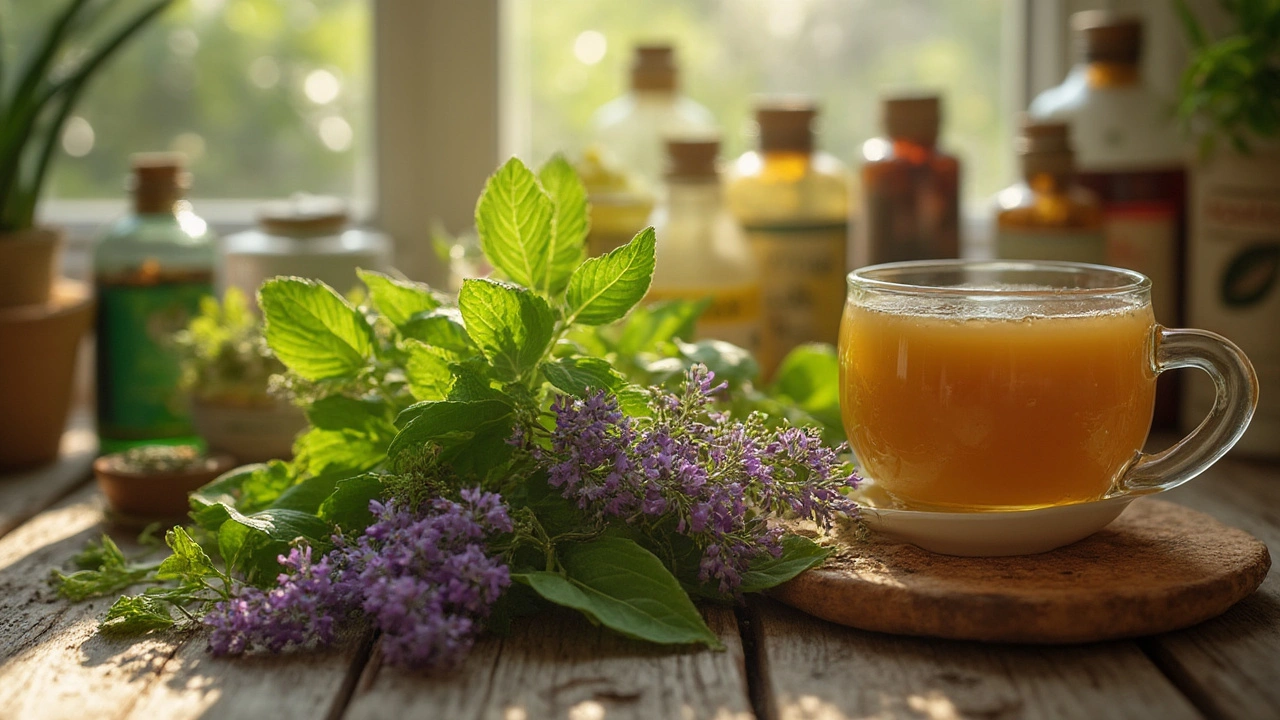Comfrey Benefits: What This Plant Can Do for You
If you’ve ever walked through a garden and seen a plant with big, fuzzy leaves, you might have spotted comfrey. It’s been used for centuries, and many people still turn to it for simple, natural relief. Below we’ll break down the main ways comfrey can help you and how to use it without any guesswork.
How Comfrey Helps Your Body
First off, comfrey is packed with compounds called allantoin, rosmarinic acid, and mucilage. Allantoin is the star here – it encourages new cell growth, which is why you’ll often hear comfrey called a “healing herb.” When you apply it to a cut, scrape, or burn, the skin repairs faster and feels less painful.
Beyond skin, comfrey supports bones and joints. The plant contains calcium, magnesium, and potassium, all essential for strong bones. Folk medicine has used comfrey poultices to ease joint aches and even speed up recovery after a sprain. Some athletes apply a comfrey cream after training to cut down swelling.
Another benefit is its anti‑inflammatory action. Rosmarinic acid can calm the body’s inflammatory response, which helps with conditions like arthritis or minor muscle soreness. People who suffer from eczema often report less itching when they use a diluted comfrey ointment.
Comfrey also has mild analgesic (pain‑relieving) properties. If you have a sore throat, a tea made from the leaves can soothe the irritation. Just remember the tea is for short‑term relief – it’s not meant for long‑term daily drinking.
Safe Ways to Use Comfrey
Even though comfrey offers many perks, it’s not a free‑for‑all herb. The root and leaves contain pyrrolizidine alkaloids (PAs) that can be harmful if taken internally over long periods. To stay safe, follow these rules:
- Topical only for most users: Use creams, gels, or poultices made from the leaves. These products are widely available and usually PA‑free.
- Avoid oral consumption of raw plant material: If you make a tea, stick to a short 5‑day course and use only the leaf portion, never the root.
- Check product labels: Look for “PA‑free” or “dermal use only” on commercial comfrey items.
- Pregnant or nursing folks should skip it: There’s not enough safety data for those groups.
Making a simple comfrey salve at home is easy. Blend a cup of fresh leaves with a cup of olive oil, warm gently for an hour, then strain and mix with beeswax. Let it set, then apply a thin layer to bruises or minor burns. The result is a soothing, natural band‑aid that supports skin regeneration.
If you’re looking for a quick fix for a sore knee, try a comfrey poultice. Soak a clean cloth in warm water, add a handful of crushed leaves, and wrap it around the joint for 20‑30 minutes. The heat opens pores, letting the allantoin work its magic.
Remember, comfrey is a tool, not a cure‑all. Pair it with good wound cleaning, proper rest, and a balanced diet for the best results. When used correctly, the plant can be a handy addition to your home‑grown health kit.
Got questions about which comfrey product fits your needs? Feel free to reach out – we’re happy to help you choose the safest option for your situation.
-
Comfrey Benefits: Unlock the Power of Natural Wellness Supplements
Comfrey is the secret star in dietary supplements, offering unique natural benefits and possible health boosts. Discover how to use comfrey safely for your wellness routine.
